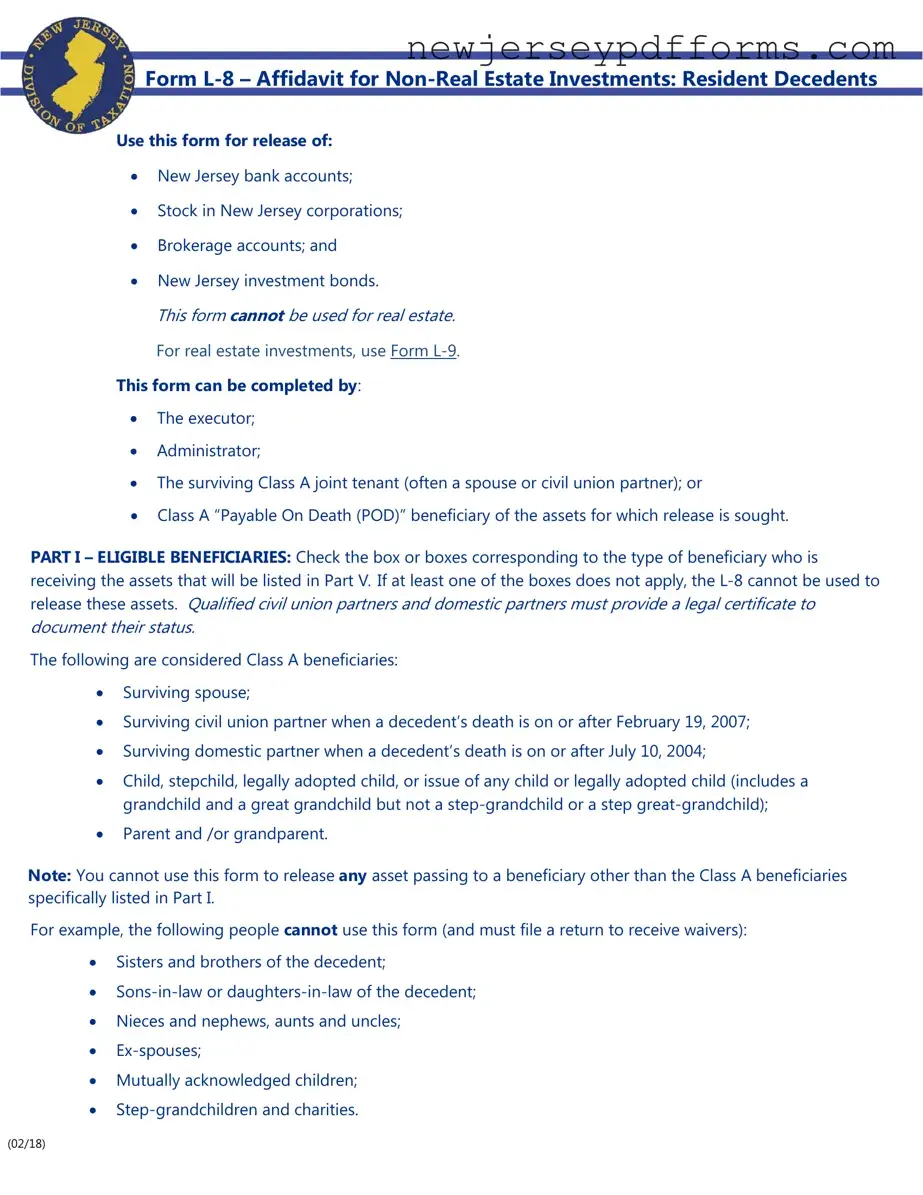What is the NJ L-8 form used for?
The NJ L-8 form, also known as the Affidavit for Non-Real Estate Investments, is used to request the release of certain assets following the death of a resident decedent. These assets may include New Jersey bank accounts, stock in New Jersey corporations, brokerage accounts, and New Jersey investment bonds. It is important to note that this form cannot be used for real estate assets; for those, the NJ L-9 form should be utilized.
Who is eligible to complete the NJ L-8 form?
The form can be completed by several parties, including the executor or administrator of the estate, the surviving Class A joint tenant (often a spouse or civil union partner), or a Class A Payable On Death (POD) beneficiary of the assets in question. It is crucial that the person completing the form is authorized to do so under New Jersey law.
What are Class A beneficiaries?
Class A beneficiaries are individuals who are eligible to receive assets without the need for further legal documentation. This group includes the surviving spouse, surviving civil union partner (if the decedent died on or after February 19, 2007), surviving domestic partner (if the decedent died on or after July 1, 2004), children, stepchildren, legally adopted children, parents, and grandparents. Other relatives, such as siblings or in-laws, do not qualify under this designation.
What should be included in Part V of the NJ L-8 form?
In Part V, individuals must list all the assets for which they are requesting a release. Each bank account or asset should be listed separately, including details such as the type of asset, how it is held or registered, and its value as of the date of death. Proper documentation is necessary to ensure that the financial institution can process the request without delays.
How does the estate tax affect the use of the NJ L-8 form?
The estate tax plays a significant role in determining eligibility to use the NJ L-8 form. If the decedent died on or after January 1, 2018, there is no estate tax, and the form can be used freely. However, if the decedent died between January 1, 2017, and January 1, 2018, their taxable estate must be under $2 million. For those who died before January 1, 2017, the taxable estate must be under $675,000. If the estate exceeds these limits, a full estate tax return must be filed instead.
What happens if the assets are held in a trust?
If any of the assets listed on the NJ L-8 form pass into or through a trust, the form cannot be used. In such cases, a complete return must be filed with the Inheritance Tax Branch. Trusts can complicate the distribution of assets, and it is essential to understand the specific terms of the trust to determine the correct filing procedures.
How should the completed NJ L-8 form be submitted?
The completed NJ L-8 form should be taken or sent directly to the financial institution holding the assets. It is important not to mail the form to the Division of Taxation, as doing so will not result in a waiver. The financial institution will verify the information and proceed with the release of the assets if everything is in order.
